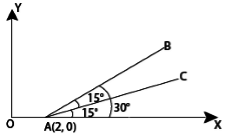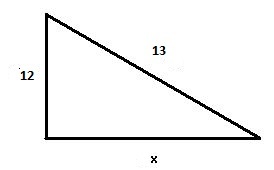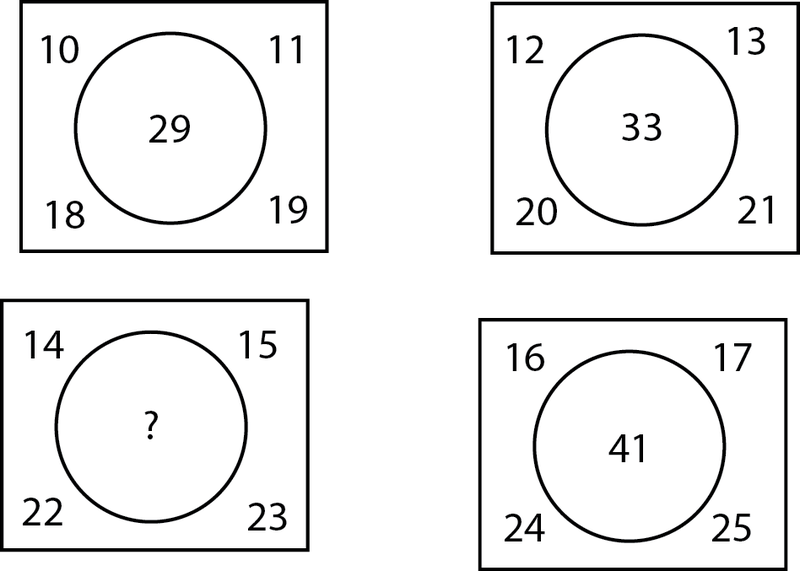7th Grade > Mathematics
THE TRIANGLE AND ITS PROPERTIES MCQs
:
(a) Answer: 1 Mark
(b) Answer: 1 Mark
Reason: 1 Mark
(a) In a right-angled isosceles triangle, sides other than the hypotenuse are equal in length.
In ABC, AB = BC ⇒∠1=∠3 -------------------I
By angle sum property of triangle,
∠1+∠2+∠3=180∘
∠1+90+∠1=180∘
2∠1=90∘
⇒∠1=45∘=∠2
So, angles are 45∘,45∘ and 90∘
(b) A triangle ABC with the given side lengths of AB = 12 cm, BC = 8 cm and AC = 20 cm is not possible because in a triangle the sum of any two sides should be greater than the third side but in this triangle, AB + BC = 20 cm which is equal to the third side AC = 20 cm. AB + BC should have been greater than AC.
:
Answer: 1 Mark
Justification: 1 Mark
Yes.
The median AD will divide the ∆ABC into 2 triangles ∆ADB and ∆ADC. These two triangles, as shown in the figure will have the same altitude AN as the altitude is the perpendicular distance from the vertex to the base of the triangle.The foot of the perpendicular can be inside as well as outside the triangle as shown in the figure. (Note: The median of the triangle divides it into 2 triangles with equal area.)
:
Each part: 1 Mark each
(i) Since AB + BC > AC, AB + AC > BC and BC + AC > AB, the following triangle can exist.
(ii) The following triangle cannot exist since OM + NO is not greater than MN.
(iii) The following triangle cannot exist since one of the angles of the triangles is 0o. All angles of a triangle should be greater than 0o.
:
Formula: 1 Mark
Each part: 1 Mark
(a) Suppose, the above triangle is right-angled such that 10 is the longest side.
Then, according to Pythagoras Theorem,
Base2 + Perpendicular2 = Hypotenuse2
Or, (16x)2 + (12x)2 = 102
Or, 256x2 + 144x2 = 100
Or, 400x2 = 100
Or, x = √100400 = 0.5
(b) According to Pythagoras Theorem,
Base2 + Perpendicular2 = Hypotenuse2
x2 + 122 = 132
x2 + 144 = 169
x2 = 169 - 144
x2 = 25
x = 5
:
Name: 1 Mark
Theorem: 1 Mark
Answer: 1 Mark
Since ∠C is 90∘, the following is a right-angled triangle.
The theorem used is known as Pythagoras Theorem.
In a right angled triangle,
Base2 + perpendicular2 = hypotenuse2 (Pythagaros's Theorem)
Or, AB2 = BC2 + AC2
Or, AB2 = 16 + 9 = 25
Or, AB = √25 = 5
:
(a) Steps: 1 Mark
Proof: 1 Mark
(b) Steps: 1 Mark
Result: 1 Mark
(a)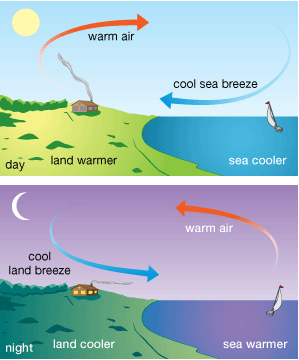
∠1, ∠2 and ∠3 are angles of triangle ABC and 4 is the exterior angle when BC is extended to D.
∠1 + ∠2 = ∠4 (Exterior Angle Property)
∠1 + ∠2 + ∠3 = ∠4 + ∠3 (Adding ∠3 to both sides)
Also, ∠3 + ∠4 = 180o (Linear Pair of angles)
∴ ∠1 + ∠2 + ∠3 = 180o
(b)
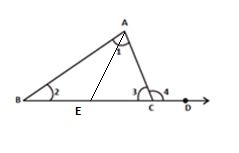
∠1 + ∠2 = ∠4 (Exterior Angle Property)
∠1+60∘=140∘
∠1=140∘−60∘=80∘
Since AE is the angular bisector therefore ∠EAC=∠12
⇒x=802=40∘
:
(a) Steps: 1 Mark
Correct answer: 1 Mark
(b) Reason: 1 Mark
Correct answer: 1 Mark
(a)
In the figure, 1, 2 and 3 are the interior angles whereas 4, 5 and 6 are exterior angles. Using linear pair axiom, we can say that:
∠1+∠4=180∘
∠3+∠6=180∘
∠2+∠3=180∘
Adding all of them, we get:
∠((1+4)+(3+6)+(2+5))=540∘
Rearranging the terms, we get:
∠((1+2+3)+(4+5+6))=540∘
∠(1+2+3)=180∘ (Angle Sum Property of a triangle)
So, ∠((4+5+6))=540∘−180∘=360∘
So, the sum of the exterior angles of a triangle is 360∘
(b) Suppose such a triangle is possible. Then the sum of the lengths of any two sides would be greater than the length of the third side. Let's check this.
Is 4.5 + 5.8 > 10.2? Yes
Is 5.8 + 10.2 > 4.5? Yes
Is 10.2 + 4.5 > 5.8? Yes
Therefore, the triangle is possible.
:
Properties : 1 Mark
Steps : 2 Marks
Result : 1 Mark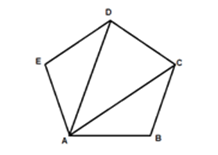
In triangle ABC, AC < AB + BC ------------------- 1
In triangle ADE, AD < AE + DE ------------------- 2
Adding 1 and 2,
AC + AD < AB + BC + AE + DE ----------------3
In triangle ADC, CD < AD + AC ------------------- 4
From 3 and 4, we can write
CD < AB + BC + AE + DE
Adding CD to both sides,
2CD < AB + BC + CD + DE + EA
Or, 2 CD < Perimeter of ABCDE
:
(a) Steps: 1 Mark
Correct answer: 1 Mark
(b) Formula: 1 Mark
Result: 1 Mark
(a)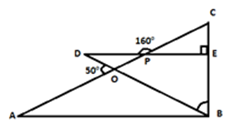
∠OAD=50°( given)∠DOC = 180°−50°=130°( linear pair )∠DPC = 160° (given)∠ DPO =180° − 160 °( Linear pair)∠DPO= 20°In △ DOP∠ODP =180°−(130° + 20 °) ( by angle sum property )∠ODP =30°In △ DBE∠DBE =180°−( 90° + 30° ) (By angle sum property )∠DBE = 60°
(b)
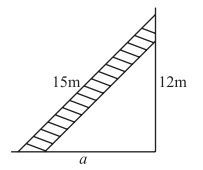
The wall and the ground are at right angle. Therefore the ladder, ground and the wall make the sides of a right-angled triangle.
∴a2+122=152
⇒a2=225−144=81
a=√81=9 m
(a) In a marathon, you started from checkpoint A and ran 5 km towards West. The checkpoint you reached was B. Then, you again ran for 12 km towards North and reached checkpoint C. Find the length of the shortest path which you must take to reach the finishing checkpoint A.
(b) Show that the angles of an equilateral triangle are 60∘ each. [4 MARKS]
:
(a) Solution: 2 Marks
(b) Proof: 2 Marks
(a)

If we draw the path taken by you, it will look something like the figure above. We have to find AC. Applying Pythagoras property,
AB2 + BC2 = AC2
52 + 122 = AC2
AC2 = 25 + 144
AC2 = √169
AC = 13 km
(b) Let ABC be an equilateral triangle.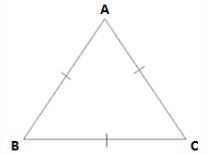
BC = AC = AB (Length of all sides is same)
⇒∠A=∠B=∠C ( Angle opposite to equal sides are equal)
Also,
∠A+∠B+∠C=180∘
⇒3∠A=180∘
⇒∠A=60∘
∴∠A=∠B=∠C=60∘
Thus, the angles of an equilateral triangle are 60∘ each.

